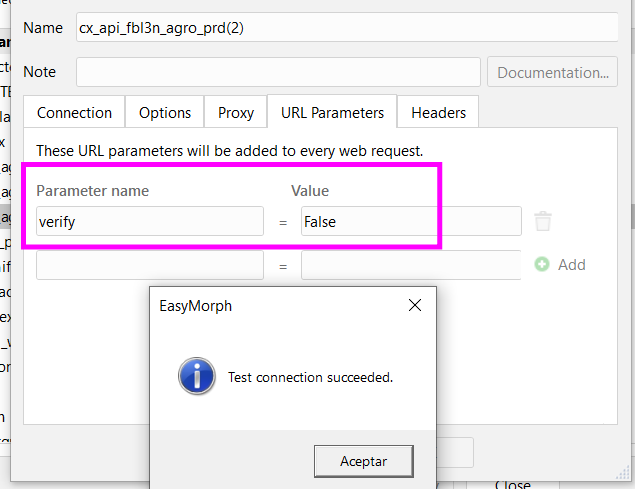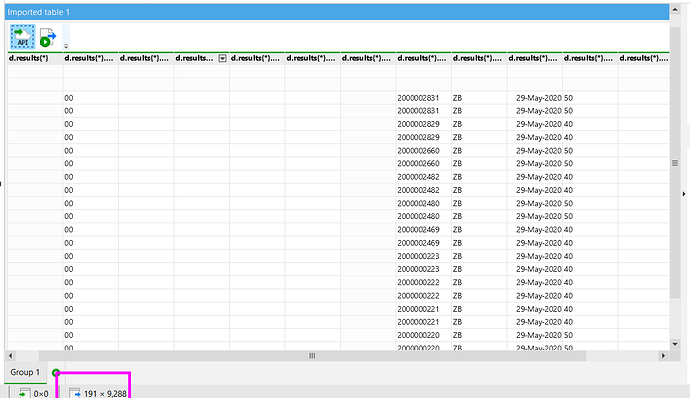Hi there , we are using webconector to extract information from sap using odata conector.
The request is something like this :
http://2***..:8000/sap/opu/odata/sap/YWTGW_GET_*/YWTGW_GET_?$filter=Bukrs eq ‘PE10’ and Feclvpa eq datetime’2023-05-18T00:00:00’ and Konto eq ‘1041102110’ &$format=json
When we chek the results using easymorph , the operations returns

result : 4,643 rows.
But we cheked against other methods. Postman and Python and the result are diferentes on those tools , the number of rows was : 9,231 wich is the correct number.
ptyhon :
postman:


Could you have some advice or recomendation for this case.
Thanks a lot.
Hi Eduardo!
Is it possible for you to share that JSON with us so we analyze the difference in EasyMorph and Postman behavior? If so - please send it to our support email.
Also, can you please change the “Parsing mode” option on the Options tab to “Sparse”? How many rows will you get in that case?
Hi Andrew, change the mode to “Sparse” and the number of rows is much closer to the correct result.
Could you explain me a little more about this 2 options , thanks a lot.
Hi Andrew , we also change the server today and now is using https.
When I update the conector using the new credentials I get this error :

The SAP partner give us the instruccion to disable SSL certified.
In postman we make this action :
And in python , we make this action :
With this modification is running ok , in postman and python.
Is there somethin similar in easymorph , to disable the verification.
Let me know if there is some advice.
Thanks a lot.
Hi Eduardo,
The main difference is that a row is added for each JSON object in the Sparse mode. In the Dense mode, all the scalar values from an object and from its child objects are combined. And a row is added either for the whole JSON or for each JSON array item.
Also, in some edge cases (like an empty object), an empty column will be added in the Sparse mode but not in the Dense mode.
As for SSL certificate verification, EasyMorph forbids certificates with incorrect domain names but allows self-signed certificates. And for now, there is no way to change that behavior. As a workaround, it should be possible to make requests with the PowerShell action. This way, you should be able to configure SSL certificate validation yourself.
As for the 403 Forbidden error, if you are getting that error, the HTTPS connection was successfully established. So this error is caused by some other factor.
Hi Andrew , thanks a lot for the answer.
For the SSL we make this and works fine.

We send the parameter , verify = False.
And this disable the SSL certification. Everything works fine now.
Let me know if this behaviour is ok.
We send the parameter , verify = False.
It would be best if you did not do this.
The mentioned above parameter Verify is related only to the Python library, and according to the documentation, is "A Boolean or a String indication to verify the servers TLS certificate or not".
However, in the case of EasyMorph, you are trying to add an URL parameter to each request, which is something different and does not affect SSL/TLS validation.









